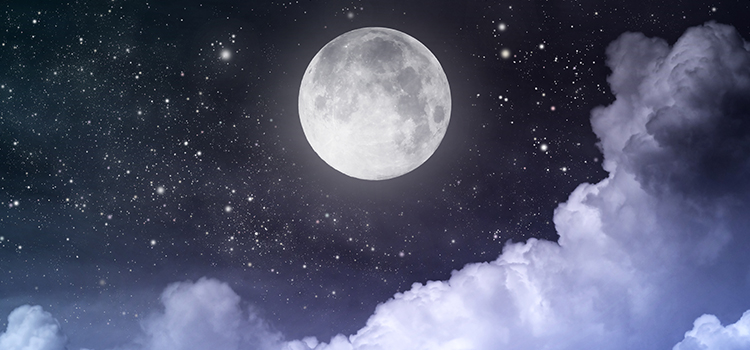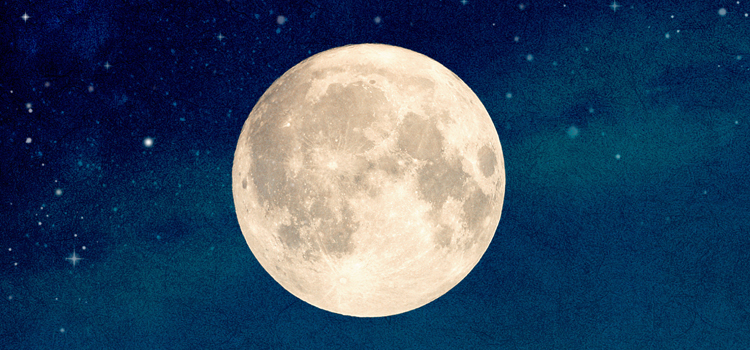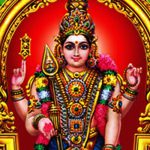Introduction
Pournami in Sanskrit refers to the Full Moon Day. This day denotes the Full Moon day in each month and demarcates the two Lunar Paksha (phases) of the month. On this day, the Moon aligns in a straight line with the Sun and the Earth. The Full Moon offers complete illumination and causes high tides. According to the Hindu religion, Pournami is one of the Thithis of auspicious nights. The Moon has feminine power, and the bright day defines auspiciousness.
Pournami concurs with lunar eclipses. The Pournami Vrat and the Sri Satyanarayana Pooja are conducted on the Full Moon day and should be one day before the Pournami Thithi. The Full Moon day is very auspicious for Goddesses. People offer worship and seek their blessings.
The Goddesses have the power of the Moon that illustrates the power of the mind. The Moon is tranquil, and its radiance reflects beauty. Pournami is also called Poornima.
Pournami Dates in 2020
January 10, 2020, Friday
Pausha, Shukla Purnima
Begins – 02:34, Jan 10
Ends – 00:50, Jan 11
February 9, 2020, Sunday
Magha, Shukla Purnima
Begins – 16:01, Feb 08
Ends – 13:02, Feb 09
March 9, 2020, Monday
Phalguna, Shukla Purnima
Begins – 03:03, Mar 09
Ends – 23:17, Mar 09
April 7, 2020, Tuesday
Chaitra, Shukla Purnima
Begins – 12:01, Apr 07
Ends – 08:04, Apr 08
April 8, 2020, Wednesday
Chaitra, Shukla Purnima
Begins – 12:01, Apr 07
Ends – 08:04, Apr 08
May 7, 2020, Thursday
Vaishakha, Shukla Purnima
Begins – 19:44, May 06
Ends – 16:14, May 07
June 5, 2020, Friday
Jyeshtha, Shukla Purnima
Begins – 03:15, Jun 05
Ends – 00:41, Jun 06
July 4, 2020, Saturday
Ashadha, Shukla Purnima
Begins – 11:33, Jul 04
Ends – 10:13, Jul 05
July 5, 2020, Sunday
Ashadha, Shukla Purnima
Begins – 11:33, Jul 04
Ends – 10:13, Jul 05
August 3, 2020, Monday
Shravana, Shukla Purnima
Begins – 21:28, Aug 02
Ends – 21:28, Aug 03
September 1, 2020, Tuesday
Bhadrapada, Shukla Purnima
Begins – 09:38, Sep 01
Ends – 10:51, Sep 02
September 2, 2020, Wednesday
Bhadrapada, Shukla Purnima
Begins – 09:38, Sep 01
Ends – 10:51, Sep 02
October 1, 2020, Thursday
Ashwina Shukla Adhika Purnima
Begins – 00:25, Oct 01
Ends – 02:34, Oct 02
October 31, 2020, Saturday
Ashwina, Shukla Purnima
Begins – 17:45, Oct 30
Ends – 20:18, Oct 31
November 29, 2020, Sunday
Kartika, Shukla Purnima
Begins – 12:47, Nov 29
Ends – 14:59, Nov 30
November 30, 2020, Monday
Kartika, Shukla Purnima
Begins – 12:47, Nov 29
Ends – 14:59, Nov 30
December 29, 2020, Tuesday
Margashirsha, Shukla Purnima
Begins – 07:54, Dec 29
Ends – 08:57, Dec 30
December 30, 2020, Wednesday
Margashirsha, Shukla Purnima
Begins – 07:54, Dec 29
Ends – 08:57, Dec 30
Rituals of Pournami
Pournami is considered auspicious for Shiva and Vishnu, and people offer worship to the Gods. People observe the Sri Satyanarayana Pooja at home. The Vrat (fast) begins early in the morning during the Brahma Muhurtham (4.00 A.M. to 6.00 A.M.) and ends after the Moon is sighted. People also take dips in sacred rivers before sunrise.
At night, people offer prayers to Chandra Deva. During the Full Moon day, devotees observe a partial fast of milk, fruits, water, and juices. While keeping the Pournami Vrat, they abstain from the intake of wheat, grains, pulses, rock salt, and rice.
On the day of Pournami, people worship Vishnu as he is the Preserver of the universe, and perform the Sri Satyanarayana Pooja. They worship Ganesha before the Pooja, as he is the Param Poojya Devata. After completing the Pournami Vrat, people take Prasad (sacred offering) and eat light food, after watching and praying to the Full Moon. People visit Vishnu temples and offer prayers. One important ritual is the Maha Mrityunjaya Homam, where they chant the Maha Mrityunjaya Mantra for conquering death. People perform the Homam to invoke Vishnu and other Gods.
Belief of Pournami
People believe that those born on Pournami day are considerably more intelligent than people born on other days. Such people have more attractive personalities. On the day of Pournami, it is vital to chant the Maha Mrityunjaya Mantra and receive the blessings of Shiva.
Celebration of Pournami
People across the country celebrate Pournami or Poornima and offer worship to Vishnu and his avatars (incarnations). People observe the Pournami Vrat, and in South India, they dedicate the day to Goddess Gayatri. They perform special poojas and chant the Gayatri Mantra across temples and homes.
Significance of Pournami
The Moon completes one cycle around Earth and returns to the original position on Full Moon day (Pournami). Human beings similarly close old chapters and initiate fresh, new beginnings. They shed wrong-doings and evil. People pray to Vishnu to end their misery and difficulties.
Pournami coincides with twelve special occasions and festivals over a year. On a Full Moon day, the Moon illuminates the earth in full glory and removes darkness. Myth has it that several gods were born on this day.
Curse: Waxing and Waning of Moon
According to mythology, there are several stories associated with the waxing and waning of the Moon. The Moon loses and gains illumination through the course of a month. Myth has it that Chandra Deva once approached King Daksha to marry his 27 daughters, the Nakshatras (stars). He promised King Daksha that he would treat them all equally, without favoring anyone. But he broke his promise and started spending more time with Rohini. When he came to know of this, Daksha cursed Chandra Deva and made him dark. The Moon God performed severe penance and worshipped Shiva, who mitigated the curse to some extent. Hence, the Moon continues to wax and wane, and on Pournami, he regains full glory.

Benefits of Pournami
People perform the Pournami Vrat and the Sri Satyanarayana Pooja that brings good health, happiness, and prosperity to their life. People conduct the Pournami Katha Pooja before or after marriage, on purchase of property, or any substantial achievement. People perform the Pooja to thank God and gain sustenance.
People gain mental peace and physical wellness after performing Pournami Pooja. On Full Moon day, people pray selflessly to Vishnu, and they receive God’s blessings. The Full Moon is considered a symbol of fullness, abundance, and prosperity. According to the Vedas, the change in the Moon phases has effects on the human body, like behavioral changes. When one observes the Pournami Vrat, these changes lessen. People attain blessings for good health, prosperity, and divinity under the auspices of the Full Moon.
Festivals Celebrated on Pournami
Devotees observe the Satyanarayana Vrat Pooja on all Full Moon days. They follow the Kartik Poornima on the Full Moon day of Kartik. It is also called Tripura Poornima. People observe Shravan Poornima in the month of Shravan. People celebrate Raksha Bandhan on this day. They celebrate Hayagriva Jayanti on Shravan Poornima. It is also called Narali Poornima.
Women celebrate Vat Poornima on the Full Moon Day in the month of Jyeshtha. Wives tie a sacred thread around the Vat (Banyan) tree on this day and honor Savitri, the wife of Satyavan, who prayed for her husband’s escape from death. People worship Yama, God of Death. On the Full Moon called Guru Poornima, devotees worship the Full Moon. They call this day Vyasa Poornima.
People celebrate the festivals of Holi, Buddha Poornima, Holi, Dattatreya Jayanti, and Sharad Poornima, the autumn harvest festival.
People celebrate Hanuman Jayanti on the Full Moon day in the month of Chaitra. The month of Pausha marks Shakambhari Poornima. People celebrate the Maghi Poornima, also called the Magha Poornima, the Full Moon day in the month of Magh. The Kumbh Mela is held just once in twelve years during this auspicious period.



Получение сертификата на продукцию является важным этапом для подтверждения соответствия стандартам. Прохождение сертификации позволяет создаёт положительную репутацию компании. Продукция, прошедшая сертификацию часто является обязательным условием для сотрудничества с крупными партнёрами. Кроме того, сертифицированный продукт повышает конкурентоспособность. Важно помнить, что разные отрасли требуют различных видов сертификации.
добровольная сертификация
The digital drugstore provides a wide range of pharmaceuticals with competitive pricing.
Shoppers will encounter various medicines suitable for different health conditions.
Our goal is to keep trusted brands without breaking the bank.
Quick and dependable delivery provides that your purchase gets to you quickly.
Experience the convenience of shopping online with us.
https://articles.abilogic.com/714352/breaking-taboo-discussing-kamagra-oral.html
В России сертификация имеет большое значение для подтверждения соответствия продукции установленным стандартам. Она необходима как для производителей, так и для потребителей. Документ о сертификации гарантирует соответствие товара нормам и требованиям. Особенно это актуально для товаров, влияющих на здоровье и безопасность. Прошедшие сертификацию компании чаще выбираются потребителями. Также сертификация может быть необходима для участия в тендерах и заключении договоров. Таким образом, соблюдение сертификационных требований обеспечивает стабильность и успех компании.
сертификация продукции
На территории Российской Федерации сертификация играет важную роль в обеспечении качества и безопасности товаров и услуг. Она необходима как для производителей, так и для потребителей. Документ о сертификации гарантирует соответствие товара нормам и требованиям. Это особенно важно в таких отраслях, как пищевая промышленность, строительство и медицина. Сертификация помогает повысить доверие к бренду. Также сертификация может быть необходима для участия в тендерах и заключении договоров. В итоге, соблюдение сертификационных требований обеспечивает стабильность и успех компании.
сертификация качества
В России сертификация играет важную роль в обеспечении качества и безопасности товаров и услуг. Прохождение сертификации нужно как для бизнеса, так и для конечных пользователей. Документ о сертификации гарантирует соответствие товара нормам и требованиям. Особенно это актуально для товаров, влияющих на здоровье и безопасность. Прошедшие сертификацию компании чаще выбираются потребителями. Также это часто является обязательным условием для выхода на рынок. Таким образом, соблюдение сертификационных требований обеспечивает стабильность и успех компании.
обязательная сертификация
Stake Casino GameAthlon Online Casino is among the best cryptocurrency casinos since it was one of the first.
The digital casino industry has expanded significantly and there are many options, but not all casinos offer the same experience.
In this article, we will examine the best casinos accessible in the Greek region and the advantages for players who live in Greece specifically.
Best online casinos of 2023 are shown in the table below. You will find the highest-rated casinos as rated by our expert team.
When choosing a casino, make sure to check the legal certification, security certificates, and data protection measures to confirm security for players on their websites.
If any of these elements are missing, or if it’s hard to verify them, we avoid that platform.
Casino software developers are crucial in choosing an online casino. Typically, if there’s no valid license, you won’t find reliable providers like NetEnt represented on the site.
The best online casinos offer known payment methods like Visa, but they should also include electronic payment methods like Neteller and many others.
Оказываем прокат автобусов и микроавтобусов с водителем крупным компаниям, компаний среднего и малого сегмента, а также частным заказчикам.
https://avtoaibolit-76.ru/
Организуем удобную и абсолютно безопасную перевозку для групп людей, предусматривая поездки на бракосочетания, корпоративные праздники, групповые экскурсии и другие мероприятия в регионе Челябинска.
Предлагаем прокат автобусов и микроавтобусов с водителем для крупных корпораций, малым и средним предприятиям, а также для частных клиентов.
Ремонт и обслуживание автобусов
Гарантируем удобную и абсолютно безопасную доставку небольших и больших групп, предусматривая транспортные услуги на свадебные мероприятия, деловые мероприятия, туристические поездки и разные мероприятия в городе Челябинске и Челябинской области.
Swiss watches have long been synonymous with precision. Meticulously designed by renowned artisans, they seamlessly blend classic techniques with modern technology.
All elements reflect unmatched quality, from intricate mechanisms to high-end materials.
Investing in a Swiss watch is a true statement of status. It represents timeless elegance and heritage craftsmanship.
Be it a bold statement piece, Swiss watches provide unparalleled precision that never goes out of style.
https://uyghuryol.com/forum/viewtopic.php?f=8&t=288214
Self-harm leading to death is a complex topic that impacts many families worldwide.
It is often associated with emotional pain, such as anxiety, trauma, or substance abuse.
People who consider suicide may feel trapped and believe there’s no solution.
how-to-kill-yourself.com
Society needs to talk openly about this matter and help vulnerable individuals.
Early support can reduce the risk, and reaching out is a necessary first step.
If you or someone you know is struggling, don’t hesitate to get support.
You are not alone, and there’s always hope.
На нашем портале вам предоставляется возможность испытать обширной коллекцией игровых слотов.
Слоты обладают яркой графикой и захватывающим игровым процессом.
Каждый слот предлагает индивидуальные бонусные функции, увеличивающие шансы на выигрыш.
1xbet казино
Слоты созданы для как новичков, так и опытных игроков.
Есть возможность воспользоваться демо-режимом, а затем перейти к игре на реальные деньги.
Проверьте свою удачу и получите удовольствие от яркого мира слотов.
This website provides access to plenty of slot games, ideal for all types of players.
Right here, you can explore classic slots, new generation slots, and jackpot slots with high-quality visuals and realistic audio.
No matter if you’re a fan of minimal mechanics or prefer complex features, you’ll find something that suits you.
https://aznakaevsk.borda.ru/?1-3-0-00001843-000-0-0-1742183767
Each title can be accessed anytime, no download needed, and well adapted for both desktop and smartphone.
In addition to games, the site includes helpful reviews, bonuses, and user ratings to guide your play.
Sign up, jump into the action, and get immersed in the thrill of online slots!
Здесь вам открывается шанс испытать широким ассортиментом игровых слотов.
Игровые автоматы характеризуются яркой графикой и интерактивным игровым процессом.
Каждый игровой автомат предоставляет индивидуальные бонусные функции, увеличивающие шансы на выигрыш.
one win
Игра в слоты подходит любителей азартных игр всех мастей.
Вы можете играть бесплатно, и потом испытать азарт игры на реальные ставки.
Проверьте свою удачу и получите удовольствие от яркого мира слотов.
На этом сайте вы сможете найти интересные слоты казино в казино Champion.
Коллекция игр содержит классические автоматы и актуальные новинки с качественной анимацией и специальными возможностями.
Всякий автомат оптимизирован для удобной игры как на компьютере, так и на мобильных устройствах.
Независимо от опыта, здесь вы обязательно подберёте слот по душе.
чемпион регистрация
Игры доступны без ограничений и не требуют скачивания.
Дополнительно сайт предоставляет программы лояльности и полезную информацию, для улучшения опыта.
Попробуйте прямо сейчас и оцените преимущества с играми от Champion!
На этом сайте вы обнаружите интересные игровые слоты в казино Champion.
Выбор игр включает классические автоматы и новейшие видеослоты с яркой графикой и специальными возможностями.
Любая игра оптимизирован для комфортного использования как на ПК, так и на смартфонах.
Будь вы новичком или профи, здесь вы найдёте подходящий вариант.
скачать приложение
Игры работают круглосуточно и не требуют скачивания.
Также сайт предлагает программы лояльности и рекомендации, для удобства пользователей.
Попробуйте прямо сейчас и насладитесь азартом с играми от Champion!
На этом сайте можно найти онлайн-игры из казино Вавада.
Любой игрок сможет выбрать подходящую игру — от традиционных игр до новейших моделей с яркой графикой.
Казино Vavada предоставляет широкий выбор слотов от топовых провайдеров, включая слоты с крупными выигрышами.
Каждый слот запускается круглосуточно и адаптирован как для компьютеров, так и для мобильных устройств.
vavada casino
Игроки могут наслаждаться настоящим драйвом, не выходя из дома.
Структура платформы удобна, что позволяет быстро найти нужную игру.
Начните прямо сейчас, чтобы открыть для себя любимые слоты!
Здесь доступны онлайн-игры от казино Vavada.
Каждый пользователь найдёт автомат по интересам — от традиционных аппаратов до новейших слотов с бонусными раундами.
Платформа Vavada открывает возможность сыграть в слотов от топовых провайдеров, включая игры с джекпотом.
Каждый слот работает круглосуточно и оптимизирован как для настольных устройств, так и для планшетов.
вавада зеркало рабочее
Вы сможете испытать атмосферой игры, не выходя из дома.
Интерфейс сайта удобна, что даёт возможность без труда начать играть.
Зарегистрируйтесь уже сегодня, чтобы открыть для себя любимые слоты!
Этот сайт — интернет-представительство профессионального аналитической компании.
Мы предоставляем помощь в сфере сыскной деятельности.
Команда опытных специалистов работает с абсолютной этичностью.
Наша работа включает поиски людей и разные виды расследований.
Заказать детектива
Каждое обращение рассматривается индивидуально.
Мы используем современные методы и ориентируемся на правовые стандарты.
Ищете реальную помощь — свяжитесь с нами.
This website offers a wide selection of interior timepieces for your interior.
You can browse modern and traditional styles to complement your living space.
Each piece is hand-picked for its craftsmanship and durability.
Whether you’re decorating a cozy bedroom, there’s always a beautiful clock waiting for you.
hidden metal wood table clocks
The shop is regularly updated with trending items.
We ensure secure delivery, so your order is always in professional processing.
Start your journey to timeless elegance with just a few clicks.
This online service features a large selection of prescription drugs for online purchase.
Customers are able to easily access treatments from your device.
Our catalog includes standard drugs and targeted therapies.
The full range is sourced from verified providers.
https://www.provenexpert.com/en-us/revamid-online/
We ensure user protection, with private checkout and fast shipping.
Whether you’re filling a prescription, you’ll find trusted options here.
Start your order today and experience convenient healthcare delivery.